One of the biggest challenges for new businesses, particularly startups and other companies operating in crowded markets, is demand generation. Distinctly different from lead generation, demand generation is a much more involved process – which makes it all the more challenging for new brands.
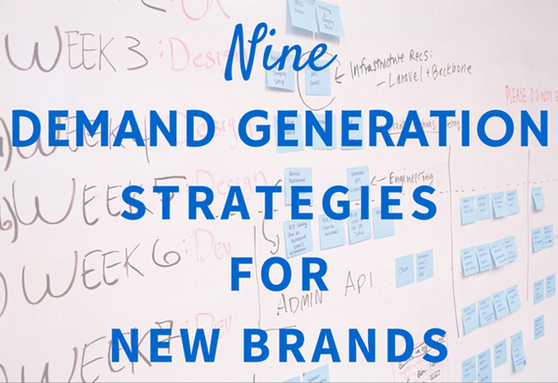
In this post, we’ll be covering what demand generation is, how it differs from “traditional” lead generation, and going over nine demand generation strategies for new brands. By the end of this post, you’ll know exactly what you need to do to get people excited about your products and keep those (qualified) leads rolling in, so let’s get started.
What Is Demand Generation?
At its simplest, demand generation can be defined as – surprise, surprise – the generation of demand for a business’ products or services. This is accomplished through a gradual, comprehensive, and holistic process that often spans entire marketing departments.
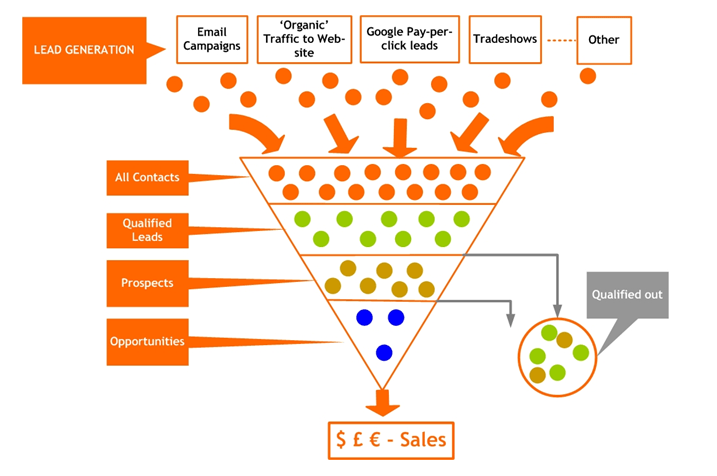
Image via neilpatel.com
Demand generation, like conversion paths, can (and should) be thought of as a funnel. Demand generation begins by identifying audiences that are likely to be receptive to the marketing messaging of a brand, before shepherding prospects through a funnel that addresses every stage of the conversion process. However, unlike inbound marketing or traditional conversion paths (both of which play a part in the process), demand generation aligns marketing closely with sales to accomplish these goals.
Think of demand generation as a long-term relationship between a brand’s marketing and sales teams, and prospective customers. Demand generation starts by identifying and qualifying prospective customers through content and inbound marketing, direct response and email campaigns, and events, before passing these leads to a nurturing team. This team then further qualifies these prospects through scoring systems depending on the stage at which the prospect is in the conversion funnel, before passing these highly qualified, nurtured leads onto the sales team.

Image via leadsmarketer.net
Demand Generation vs. Lead Generation
Although demand generation and traditional lead generation might seem very similar, there’s actually an important distinction between the two.
Some businesses are indiscriminate when it comes to leads and what qualifies a prospect as a lead. Someone who merely visits a website, for example, might be considered a lead to some companies. This is especially true of businesses that rely on high-volume cold-calling to generate new businesses – think those annoying companies that call you up to try and sell you steak knives.
However, demand generation identifies potential prospects based on their initial actions and takes them through a (oftentimes lengthy) nurturing process to provide sales teams with much higher quality, genuinely qualified leads. This results in better conversations between sales reps and prospects, and – of course – higher conversion rates and more sales.

Essentially, the greatest difference between demand generation and lead generation is that demand gen is a significantly more comprehensive process that takes place over a much greater span of time than lead generation, involves close collaboration and communication between sales and marketing departments, and incorporates elements of inbound, direct, and email marketing to nurture prospects while offering them the material they need to learn more about how you can solve their problems.
9 Demand Generation Strategies for New Brands
So, now we have a better idea of what demand generation is, how can you, as a new or smaller brand, go about implementing it? Here are nine demand generation strategies you can start using right now.
1. Give Away Your Best Stuff
Whether it’s a content download, a free offer, or another promotional campaign, be sure to only give away your very best stuff. Although this might seem counterintuitive, consistently offering giveaways of real value has several benefits.

One of HubSpot’s most successful content downloads,
which has been downloaded thousands of times.
Firstly, it creates a sense of trust between your audience and your brand, which means they’re more likely to come back to your content or your website. Secondly, it reflects well on your brand – so much so that enthusiastic prospects may take things one step further and advocate for your brand on your behalf, becoming the elusive “brand ambassadors” companies are always talking about. Lastly, by offering something of real value, your visitors are much more likely to part with whatever information you need to begin qualifying them as a viable lead, the first stage in the demand generation process.
2. Provide a Free Tool, App, or Resource
One of the most effective ways to create a successful demand generation campaign as a new brand is by offering a free tool or resource.

WordStream implemented this strategy back in 2011 when we launched the AdWords Performance Grader. This completely free tool has not only proven a remarkably strong demand generation tool, but also helped thousands of advertisers audit their PPC accounts and take action to improve the strength of their campaigns. This reinforces our first strategy of giving away your best stuff, and makes WordStream a valuable resource for advertisers.
Over the years, we’ve graded billions of dollars in AdWords spend (and now Bing Ads, too), which has helped us strengthen and solidify our position as one of the PPC industry’s most trusted go-to resources for PPC help, advice, and news.
Of course, developing a free tool (or app) isn’t cheap, and there are overheads you’ll have to consider, such as development budgets. However, we’ve found that these overheads pale in comparison to the value the AdWords Performance Grader has offered advertisers, and its place in our own demand generation strategy.
3. Use Lookalike Audiences on Facebook
For our third demand generation strategy, I’m going to assume that you’re already advertising on Facebook (and if you aren’t, it really is time to reevaluate that) and instead recommend one of the most powerful targeting strategies on the platform, which is lookalike audiences.
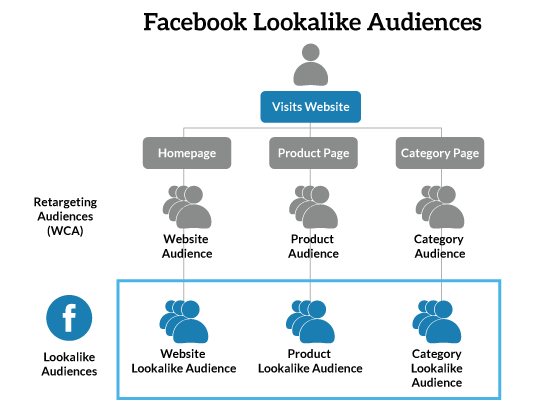
As their name suggests, lookalike audiences are custom audiences that closely resemble users that have already expressed an interest in your products, services, or content, based on demographic and behavioral similarities. Facebook allows you to upload custom audiences created using data you’ve already gathered from your actual users, and create lookalike audiences that share many of the same characteristics.
One of the key advantages of lookalike audiences is that it allows you to essentially double the potential reach of your Facebook advertising campaigns by leveraging the vast wealth of data that Facebook has on its users. The larger the custom audience you upload, the more widely you can cast your net using lookalikes. Given how much time people spend on Facebook, this targeting feature is one of your most powerful demand generation strategies, and one we recommend you start using right away.
4. Partner with Industry Superstars on Webinars
Some brands (again, particularly tech companies and startups) phone it in when it comes to webinars. Sure, they’re relatively easy to produce and don’t have much of a production overhead, but if you don’t give webinars your all, why would anyone pay attention to them?
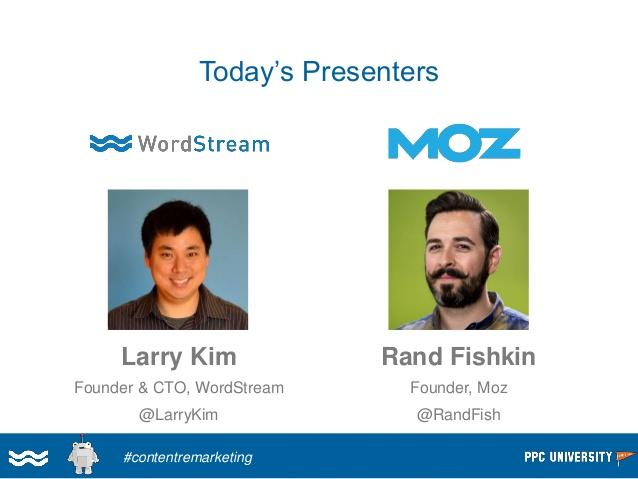
Larry has worked with some of the biggest names in digital marketing on his webinars.
Check out the slide deck from this webinar with Rand Fishkin on content remarketing here.
If webinars are going to be a part of your demand generation strategy, you need to go all in, and only partner with the superstars of your industry on webinars. Doing so will increase your standing in your industry, forge valuable connections with key influencers, and boost your brand awareness – all crucial elements of an ongoing demand generation strategy.
Of course, partnering with industry rock stars isn’t as easy as simply emailing Guy Kawasaki and asking him to join your next webinar. Establishing relationships takes time and effort, and initially, it might not be possible to snag the speakers you want. However, when planning and producing webinars, you should strive to feature the most respected, well-known guests you can, and – see our first point – give away your best tips, advice, and strategies during the webinars themselves.
5. Use Managed Placements in Display Campaigns
These days, display advertising sometimes gets a bad rap. Display certainly has its limitations (and unique advantages), but many advertisers overlook the power of Managed Placements in their Display Network campaigns.
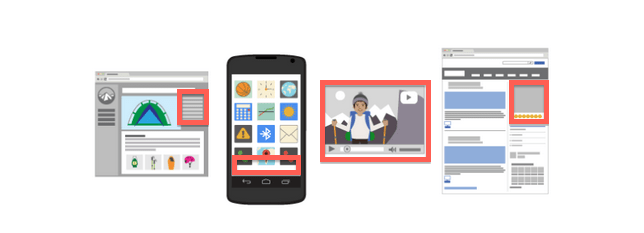
Image via Google
If you’re not familiar with them, Managed Placements allow advertisers to control the audience their display ads are shown to more effectively by specifying where their ads appear, limiting their reach to individuals who are more likely to respond positively to them. Think of them as a more targeted approach to display, rather than the somewhat scattershot approach of regular display ads.
As the primary purpose of display campaigns is to raise brand awareness, display can be a highly effective part of a wider demand generation campaign. You’re not necessarily looking for conversions from display (though it’s always nice), but rather increasing mindshare and promoting your brand, both of which are strengths of display campaigns. With Managed Placements, you get these benefits combined with additional control over who sees your ads, which can make this ad type even more effective.
6. Leverage the Power of Display Remarketing to Build Brand Awareness
To many marketers, remarketing is a powerful strategy for increasing conversion rates. While you should be remarketing with a view to increasing conversions, remarketing is also a remarkably powerful brand awareness-building tool.
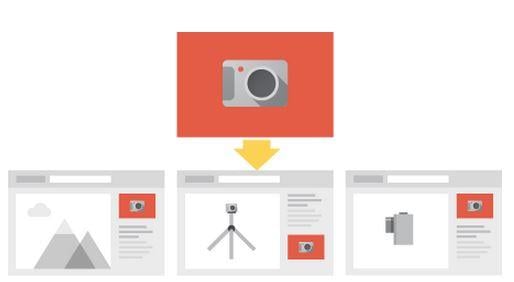
Image via Google
Larry outlined this principle in a recent post about remarketing, and provided an example from WordStream’s traffic that excellently illustrates the power of this technique. As Larry explains, a few years ago, we discovered that while we were doing a great job of attracting new traffic to the site, we weren’t doing so well when it came to retaining or converting this traffic. In fact, Larry says that most of WordStream’s traffic came to the site through non-branded organic search and didn’t convert. Most users visited the site just once before leaving, never to return. That’s when we started using display remarketing.
As you can see in the figure below, once we implemented display remarketing as a brand awareness-building strategy, we dramatically increased conversion rates over time:
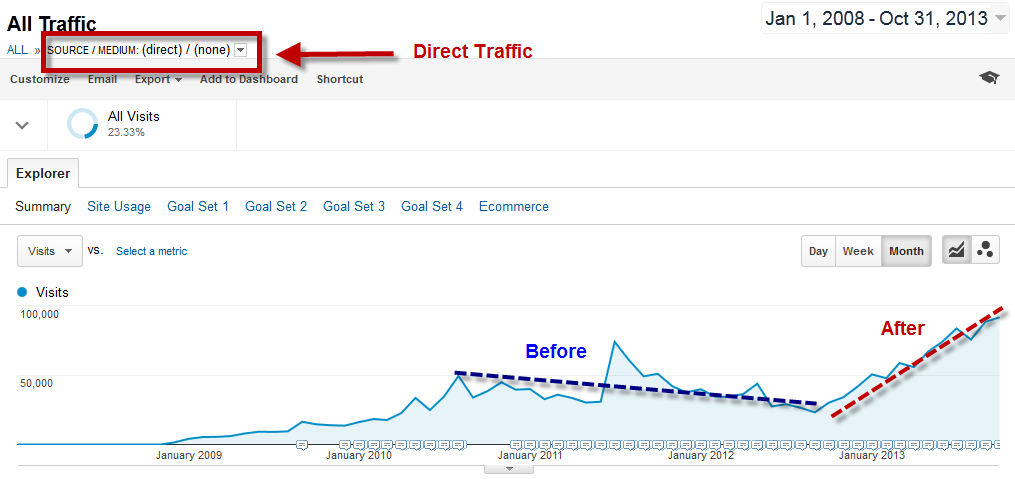
Using direct traffic as a proxy for branded search terms, we found that after implementing display remarketing to promote the AdWords Performance Grader (see demand generation strategy number 2), we managed to increase repeat visitors by 50%, increased conversion rates by 51%, and increased our average time-on-site by an amazing 300%!
7. Invest (More) in Content Creation
Inbound marketing is a huge part of a successful demand generation strategy, and content creation has never been more important.
A solid content strategy for demand generation purposes incorporates elements of some of our previous recommendations, including giving away only your very best stuff and providing your audience with an invaluable go-to resource. Similarly, content is most definitely a long-term investment, just like demand generation itself. Success requires consistent effort – something that many businesses fail to do when it comes to content.

… And counting. Check out the live count here.
If you’re already publishing blog posts regularly, think about how you can make them even more valuable. Do they incorporate original data or research, or just regurgitate what everyone else has already said? Do they provide timely insight into emerging trends, or are your posts always late to the party? Essentially, ask yourself some hard questions about why someone should spend their precious time reading your content, compared to that of your competitors.
At WordStream, we’ve invested a great deal of time, money, and effort in our content, but success didn’t happen overnight. It took several years of hard work before our efforts really started to pay off, and we’ve continued to invest in content as a crucial element in our demand generation strategy. Don’t phone it in when it comes to content – double down and only publish the very best content you possibly can.
8. Optimize Your Email Marketing Strategies
Email marketing can be an incredibly powerful component of your demand generation campaigns, but far too many advertisers misuse it or fail to harness its potential.

Image via Optimizely
When it comes to email marketing, A/B testing is essential, and the adage that “Less is more” most definitely applies. If you resort to carpet-bombing your email list on a regular basis, you risk turning prospective customers off and harming your brand. Rather than blasting your lists all the time, work smarter, not harder.
Everything about your email campaigns can (and should) be A/B tested to ensure your emails are performing as strongly as they possibly can. Everything from headline length and subject line copy to linking strategies and offer placements should be tested so that you can make informed decisions about your email campaigns based on hard data rather than assumptions.
You should also incorporate demand generation strategy number one – only give away your best stuff – when it comes to email marketing. Constantly spamming your database with low-value offers is a surefire way to drive your subscribers crazy (and tempt them to click “unsubscribe”), but if you offer your list your very best tools, resources, and offers in your emails, you’ll soon have your prospects looking forward to hearing from you.
9. Consider Implementing a Lead Scoring System
Demand generation isn’t just about increasing the quantity of leads for your brand, but also raising the quality of those leads. Lead scoring is one of the best ways to ascertain whether your leads are of the quality your sales team needs to close more deals.

Lead scoring evaluates the historical behavior of your prospects and the actions they’ve taken while interacting with your brand to determine whether the individual prospect demonstrates sufficient interest to be considered a “hot” lead for your sales team. This is accomplished by examining the actions taken at various touchpoints with your brand, such as whether they viewed a specific page on your site that suggests purchase intent, whether they’ve expressed interest in a demonstration of your product or used your free tools, or the stage at which the prospect happens to be in the funnel (such as discovery vs. consideration). Lead scoring can also evaluate the strength of the lead by assessing the individual’s role in an organization, such as their level of decision-making responsibility and seniority in the company.
However, while lead scoring can be tempting, it may not necessarily be right for your brand. For example, if you’re struggling to generate enough leads for your sales team in the first place, it’s probably a little premature to be worrying about scoring the leads you do have. However, for brands hoping to take their demand generation strategies to the next level, lead scoring may be worth considering.







